Why you need to look beyond the geometry charts
Every mountain bike brand publishes a sizing guide and a geometry chart to go with each model, but just how accurate are they?
>>> Black Friday 2019 mountain bike deals: the offers continue to roll in

As we all know, buying clothes is not an exact science. One medium T-shirt can be different to another medium T-shirt. One 32in waist pair of jeans can be tighter than another 32in waist pair of jeans. And while you can go into a shop and try something on, you can’t do that with something sold online. Taking a punt on a new outfit online can be a massive gamble. It’s no different when buying a new bike, whether from a bike shop or buying a bike online, and even with the best returns policy in the world, making a mistake can be a huge hassle.

Don’t be scared of the demo bike guy
Obviously the best approach is to go to a good dealer or attend a demo day and physically demo a mountain bike, but if that’s not possible you need to make an educated guess about how a bike is going to ride and how it is going to fit. But how accurate are the geometry charts that bike companies publish?
Our experiment
To try and answer that question we took a look at ten different bikes we’ve tested in the last year. All of them were weighed and measured by ourselves in our workshop using the exact same method we use on all the bikes we test. As well as lengths and angles, we also measured the vertical wheel travel of all the suspension bikes we test, so that you know exactly what you’ll get from the bike in real world situations.
Most manufacturers create their geometry charts from CAD drawings, which produces extremely precise results, but as with anything, the data you get out is only as good as the data you put in. It all starts with the frame of course, and while manufacturers can be very accurate with the dimensions of each specific element of the tube, when it comes to alloy frame manufacturing, you have to allow for tolerances. Tolerances in cutting, welding, heat-treating, and tolerances in all of the linkage elements.

+/- 0.5° variation in head angle
We spoke to Ali Beckett of Redburn Design, who has a great deal of experience with frame design and working with Asian suppliers. He says that it’s very much a case of ‘you get what you pay for’ when dealing with the big Taiwanese factories. If you want tighter tolerances, you can have them, but it’ll cost more. So it’s often a case of balancing precision, accuracy and consistency against price to end up at a commercially viable end product. Typically though, in the case of an alloy frame, Ali says you can expect around a +/- 0.5° variation in head angle from a vendor. Bear in mind, however, that not all completed frames will be checked for accuracy, as that will incur another cost. Only a sample, say 5% for instance, will go through a geometry QC. He also points out that slight variations with one element of the frame can be compounded by tolerances on other elements, so the fully built up bike can end up with a greater discrepancy than the original tolerance would suggest.
As carbon frames are produced in a mould, the manufacturing is much more precise and the tolerances are much smaller – you can usually trust the quoted geometry will be pretty accurate.

Forks and shock can vary in length too
But now you have to bolt on all of the components, all of which will have their own tolerances. So one suspension fork might be longer than another ‘exact’ same fork by a few millimetres, or one shock longer or shorter than another by a millimetre, which gets amplified by the leverage ratio. Tyres are often very different to their CAD dimensions, and this discrepancy can cause big differences in bottom bracket height. Then you will have different models in the range, where some might have a RockShox fork and others might have a Fox fork. Even though they boast the same travel, the axle to crown measurements will almost certainly be different. For example an X-Fusion Trace is 6mm shorter than a Fox 36 or RockShox Lyrik at the same travel. Not all brands will change the geometry chart between models to compensate for this variation.
So you can begin to see that even half a millimetre here and half a millimetre there can start to add up, and lead to the actual geometry deviating quite a bit from the published figures. Enough of the theory, let’s look at a few real world examples.
Real world examples
Carbon bikes

Canyon Strive CF (size large)
| Geometry | Claimed figures | Actual figures | Difference |
| Head angle | 66/67.5° | 65.3/66.2° | -0.7°/-1.3 |
| Effective seat angle | 73.5° | 74.5° | +1° |
| BB height | n/a | 334mm | n/a |
| Wheelbase | 1,230mm | 1,229mm | -1mm |
| Rear wheel travel | 150/135mm | 149/139mm | -1/+4mm |
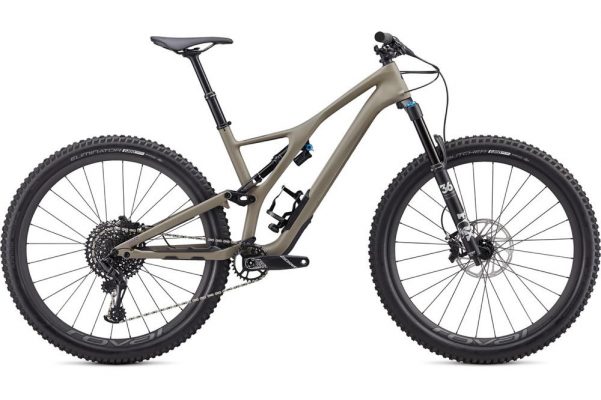
Specialized Stumpjumper Expert Carbon FSR (size large)
| Geometry | Claimed figures | Actual figures | Difference |
| Head angle | 66.5° | 65.9° | -0.6° |
| Effective seat angle | 74.1° | 66.3° | -7.8° |
| BB height | 342mm | 333mm | -9mm |
| Wheelbase | 1,201mm | 1,198mm | -3mm |
| Rear wheel travel | 140mm | 135mm | -5mm |
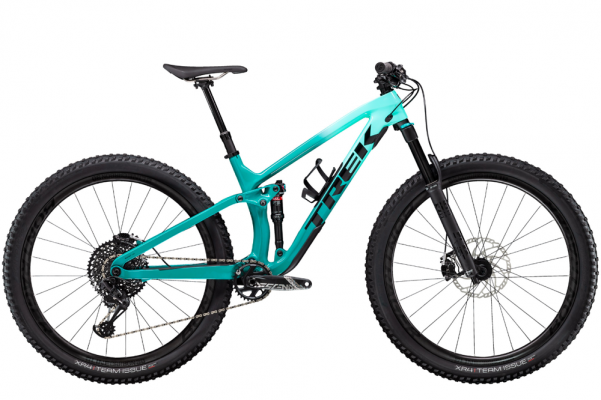
Trek Fuel EX 9.8 (size large)
| Geometry | Claimed figures | Actual figures | Difference |
| Head angle | 66° | 65.5° | -0.5° |
| Effective seat angle | 75° | 67.2° | -7.8° |
| BB height | 339mm | 337mm | -2mm |
| Wheelbase | 1,211mm | 1,215mm | +4mm |
| Rear wheel travel | 130mm | 129mm | -1mm |
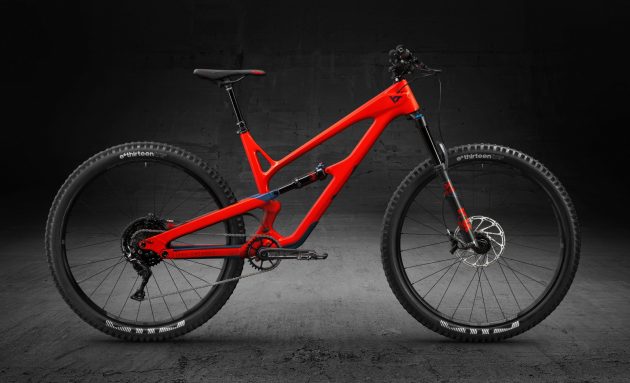
YT Jeffsy 29 CF Comp (size XL)
| Geometry | Claimed figures | Actual figures | Difference |
| Head angle | 66.5° | 66.3° | -0.2° |
| Actual seat angle | 77.5° | 70.7° | -6.8° |
| BB height | 341mm | 335mm | -6mm |
| Wheelbase | 1,244mm | 1,250mm | +6mm |
| Rear wheel travel | 140mm | 130mm | -10mm |
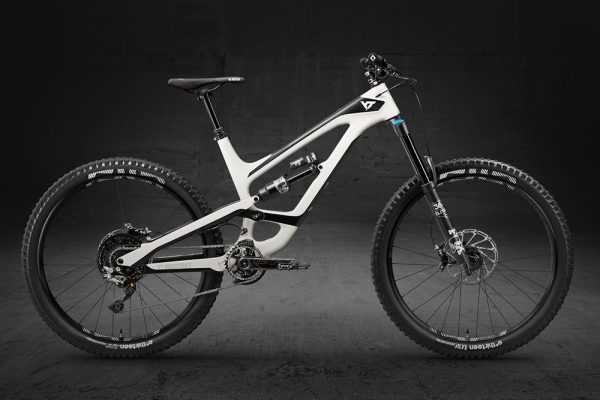
YT Capra 27 CF Pro (Size large)
| Geometry | Claimed figures | Actual figures | Difference |
| Head angle | 65° | 64.9° | -0.1° |
| Actual seat angle | 76° | 68.7° | -7.3° |
| BB height | 346mm | 346mm | 0mm |
| Wheelbase | 1,215mm | 1,215mm | 0mm |
| Rear wheel travel | 170mm | 166mm | -4mm |
Alloy bikes
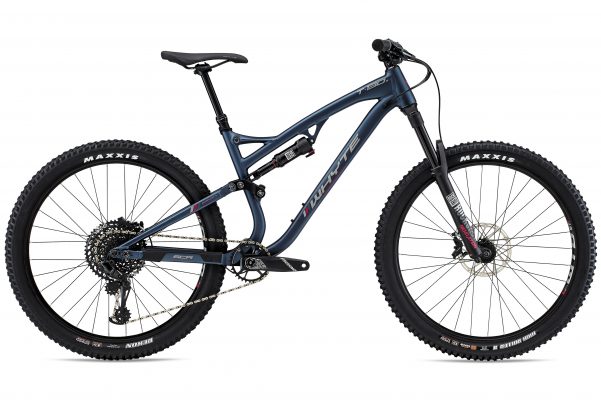
Whyte T-130 S (size large)
| Geometry | Claimed figures | Actual figures | Difference |
| Head angle | 65.6° | 65.3° | -0.3° |
| Effective seat angle | n/a | 68.3° | n/a |
| BB height | 330mm | 320mm | -10mm |
| Wheelbase | 1,138mm | 1,221mm | +83mm |
| Rear wheel travel | 130mm | 125mm | -5mm |

Commencal Meta TR 29 British Edition (size large)
| Geometry | Claimed figures | Actual figures | Difference |
| Head angle | 66.5° | 65.7° | -0.8° |
| Effective seat angle | 76.5° | 65.2° | -11.3° |
| BB height | 380mm | 335mm | -45mm |
| Wheelbase | 1,218mm | 1,230mm | +12mm |
| Rear wheel travel | 130mm | 124mm | -6mm |
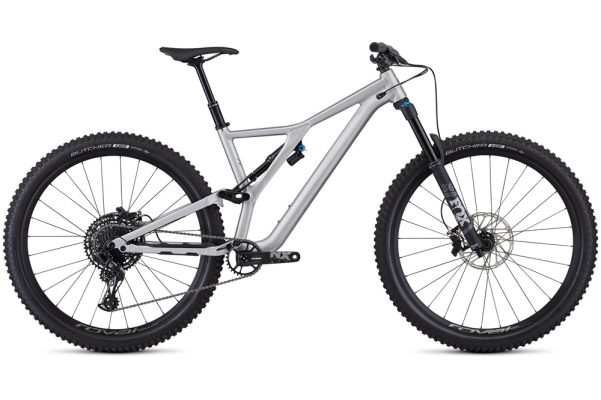
Specialized Stumpjumper EVO Comp Alloy 29 (size S3)
| Geometry | Claimed figures | Actual figures | Difference |
| Head angle | 63.5° | 63.9° | +0.4° |
| Effective seat angle | 76° | 69.5° | -6.5° |
| BB height | 328mm | 333mm | +5mm |
| Wheelbase | 1,252mm | 1,260mm | +8mm |
| Rear wheel travel | 140mm | 134mm | -6mm |
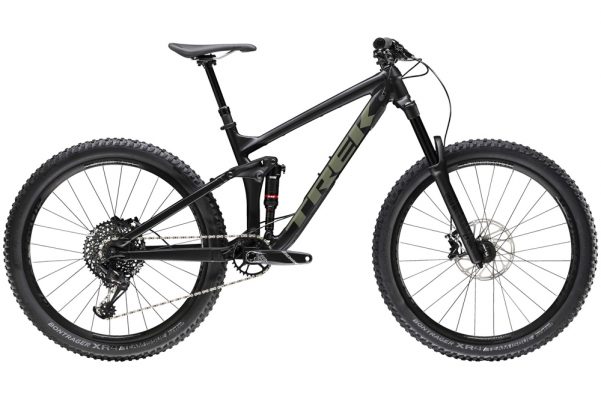
Trek Remedy 8 (size large)
| Geometry | Claimed figures | Actual figures | Difference |
| Head angle | 68° | 65.8° | -2.2° |
| Actual seat angle | 68° | 69° | +1° |
| BB height | 349mm | 342mm | -7mm |
| Wheelbase | 1,206mm | 1,199mm | -7mm |
| Rear wheel travel | 150mm | 145mm | -5mm |

Giant Stance 2 (size large)
| Geometry | Claimed figures | Actual figures | Difference |
| Head angle | 67.5° | 66.4° | -1.1° |
| Actual seat angle | 74° | 69.4° | -4.6° |
| BB height | N/A | 332mm | n/a |
| Wheelbase | 1,174mm | 1,179mm | +5mm |
| Rear wheel travel | 120mm | 125mm | +5mm |
Some themes and some howling inaccuracies
Now this is just a randomly chosen sample of bikes we’ve tested over the last 12 months, so we can’t make any definitive statements on the entire market based solely on this selection, but we can pull out some themes, highlight some howling inaccuracies and pose some further questions.
1. The claimed geometry for carbon bikes is more accurate than alloy bikes
This is pretty obvious from the numbers above, with the carbon bikes being within a degree of the claimed angles and a few millimetres of the claimed measurements – certainly nothing to lose any sleep over. The alloy bikes, on the other hand, vary from being quite similar, to massively different. That’s not to say that an alloy bike will never match the claimed geometry, it’s just that there’s more likelihood of variations than with a carbon bike.
2. BB drop is a more useful comparison than BB height (unless you’re comparing mbr bike reviews!)
To ensure BB heights are consistent across our test bikes within a comparison test, we measure them with the same tyres fitted. Obviously if you’re looking at manufacturers’ websites and comparing different models, the tyre spec may well be different and you’re probably going to not going to get true idea of relative heights. So when comparing manufacturer charts, it’s much better to compare BB drop figures (if published) as these won’t be skewed by tyre spec.
3. Seat angles are a minefield. Most brands give you an effective seat angle measurement
That’s to say a virtual measurement based on a specific seat height rather than the angle of the actual seat tube itself. Usually that will be either the intersection of a line drawn from the centre of the BB to the centre of the seat post at an average seat height (depending on the specific frame size). This will be much steeper than the actual seat tube angle were you to place an angle finder on it. Now this is not entirely disingenuous on the part of the manufacturer, as it will give you an idea of where your bum will be in relation to the BB and the rear axle at an average seat height. The problem is, most brands don’t tell you that they are using an effective measurement, and even when they do, they don’t go into detail about where that effective measurement is taken from. Is it level with the top of the head tube; is it an average seat height; is it the same seatpost extension on every frame size? Usually it’s impossible to find out. Take Trek for example. For some models it specifies both the actual and the effective seat angle. Gold star for Trek. On other full-suspension bikes it just prints a vague ‘seat tube angle’, which is obviously the effective measurement, even though it doesn’t tell you that. Not so useful.
It’s an important distinction because, should you have longer than average legs, then you’ll have a seat height above the point at which the brand has taken its measurement, so you’ll be sitting further back, and suddenly the claimed angle will be invalid. That’s why we print the actual seat angles, which you can use in combination with the effective figure and the frame layout to make a more informed choice.
4. Typos are not uncommon…
At least we hope they are typos. And we’re fully aware how easy it is for errors to creep in and not get noticed. Look at the wheelbase for the Whyte T130; our test bike is 83mm longer than claimed! That’s too much of a variation to be an inaccuracy – that has to be an honest mistake when inputting the data to the website. Nevertheless, the error remains, and it’s not only the large frame that’s wrong – all the T130 wheelbase figures look way out. Then there’s the BB height on the Commencal Meta TR 29. There’s a 45mm variation between claimed and actual figures. Again, that has to be an error when uploading the info to the website. But it’s there in black and white, and it’s not impossible that some consumers might be put off buying one after looking at those numbers.
5. Most brands round up their rear wheel travel
It’s very rare that you’ll get more travel out of a frame than claimed. To try and simplify things for consumers, most brands round up the travel (which itself is usually worked out on a CAD programme, than actually measured with a shock fitted). Is this a problem? Not usually, as it’s often not how much you’ve got, but what you do with it that counts. Although if a frame is getting on for 10mm shy of claimed travel, perhaps it should be rounded down rather than up.
6. Some things just don’t add up
On the Stumpjumper Evo, the actual head angle is steeper than claimed, but the wheelbase is longer. Eh? That doesn’t make sense. Something else must be at play here; probably with the length of the tubes that make up the front triangle. The opposite is the case with the regular Stumpjumper Expert Carbon; here the head angle is slacker than claimed but the wheelbase is shorter. Very odd!
7. Pinches of salt
If there’s one thing we can take away from all this number crunching, it’s that we should always take the quoted numbers with a pinch of salt, and the more information you can arm yourself with before making a purchase, the better.
Oh, and always check out the reviews on mbr.co.uk or in the magazine if you want real world numbers!




